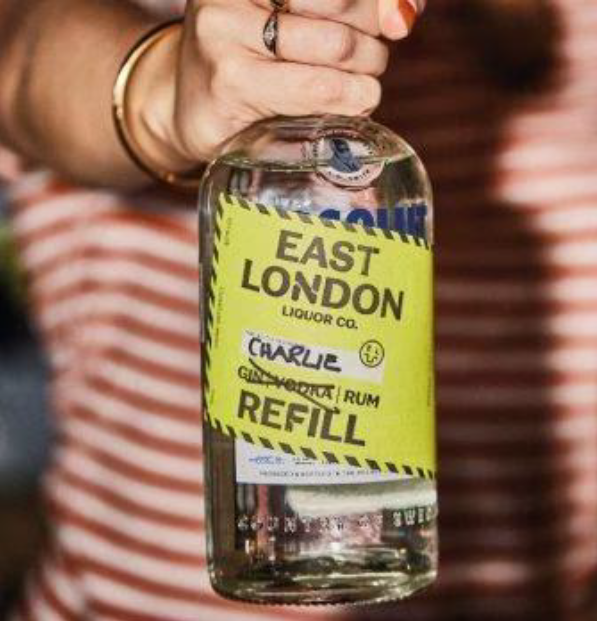
It’s no secret I’m a fan of reusable glass packaging.
Not just the type that’s collected via a deposit return scheme (DRS), which can be both a help and a hindrance to good recycling.
No, I’m referring to the kind of packaging that gets washed, refilled and returned to the consumer.
Refilling is an age-old concept. Those of us who grew up in the 1960s, remember when the electric milk float and the pinta were ubiquitous. Way back in the 18th century, bottles were handmade and expensive, so people would take their own containers to the wholesaler or wine merchant to get them filled.
At Arena’s Spirits Strategies and Innovations Conference earlier in October, speakers made clear the idea is having a resurgence, even in the logistically tricky spirits market.
Bacardi’s Michael Schmid told delegates that reuse worked well for beer and soft drinks. Although it was more difficult for spirits, “for certain brands, it’s definitely got potential”.
Not a ringing endorsement, but certainly a step forward. Scotch distillers face particular difficulties. Up to 90% of Scotch whisky production is exported (estimates vary, but that was what the Scotch Whisky Association told a House of Commons Select Committee in 2020).
Making glass consumes a lot of energy and has a consequently high carbon footprint. However, every packaging lifecycle analysis (LCA) indicates that returnable glass is the least impactful form of primary packaging. A Norwegian survey of returnable systems concluded “the reusable glass bottle turned out as preferable in comparison to single-use glass and PET bottles. This was furthermore stated to be due to the low number of glass bottles needed, the higher weight of glass bottles making them less prone to become dragged into the sea by winds or waves if dispersed, and higher return incentives for glass bottles.”
Up to 30 cycles
While some studies state reuse rates of 25-30 cycles, these tend to be among products where the aesthetics of the pack are less important (milk, beer). Five cycles are more likely to be feasible for spirits and wine brands. These levels retain the bottle’s pristine appearance without scuffing. Even at this level, the improvements on carbon footprint are substantial.
Melianthe Leeman from O-I quoted three different ways in which spirits brands already use returnable packaging.
- Eco-spirits – this on-bar dispense system uses award-winning reusable glass packaging, called ECOTOTE™. It has recently been adopted by Diageo’s Ketel One premium vodka for sales to a premium cocktail company in the Netherlands
- East London Liquor Company – takes a back-to-basics approach, which would have been familiar with our 18th century drinker. As the firm’s website puts it: “Bring ANY 70cl spirits bottle down to our distillery and fill ’em up with the good stuff”
- Salinas Cachaça – this is a fully commercial reusable spirits system used for the spirit’s retail sales in Brazil. It’s similar to the German beer or the old UK soft drinks model. The brand makes use of a standard reusable 600ml amber beer bottle to pack its cachaça. Nothing affects brand positioning; this is a spirit which sells at $100 a bottle
It seems vital to keep it flexible and find the reusable solution which works for you.
From a branding perspective, it’s a winner. Gen Z are looking for brands with a genuinely sustainable persona, just as much as they are seeking healthy alternatives to traditional spirits.
Jason Hockman from Master of Malt put his finger on it: “Any added-value opportunity really resonates with consumers”. That might be experiences, glassware, competitions or, I would suggest, a pack which comes around again and again, cutting the bottle’s carbon footprint by nearly 80% after just five trips.
Returnability, as shown in these examples, is a fine way to create an appealing point of difference and enhance brand reputation in a crowded market. Appealing and good for you. What’s not to like?